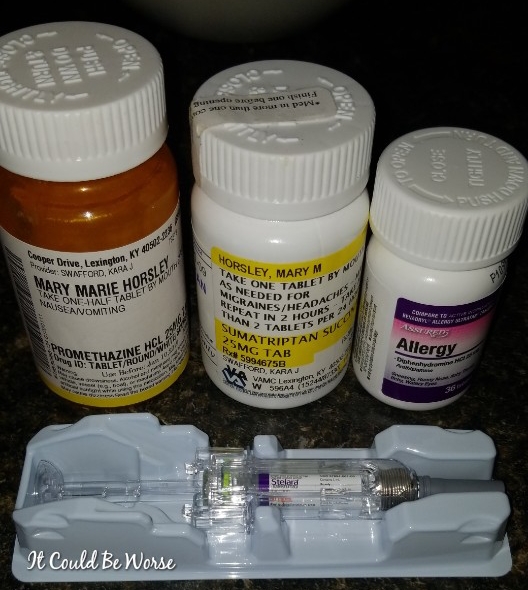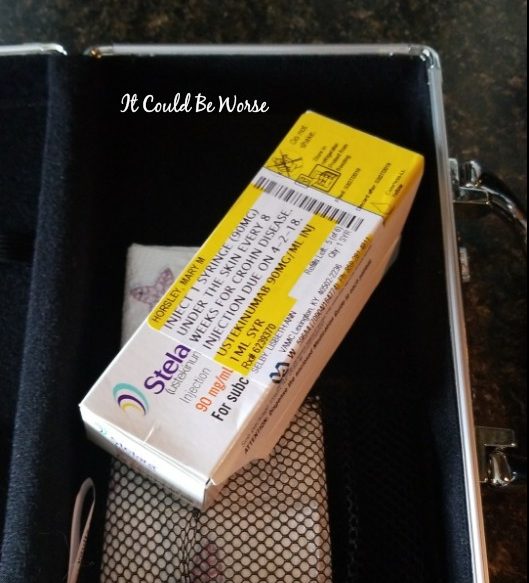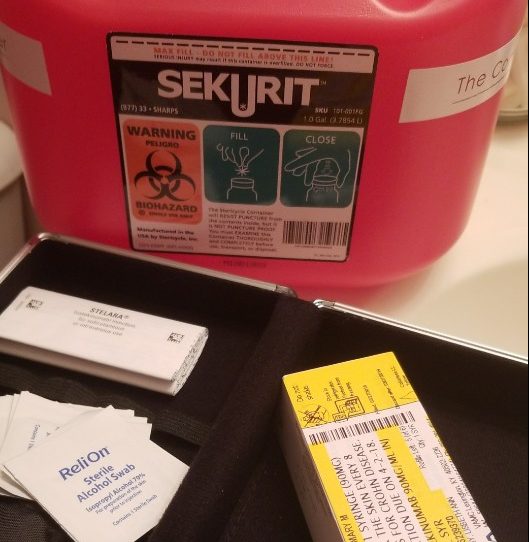There are many medications for Crohn’s disease and IBD. There are pills, IV infusions, self-injections, and shots and mechanisms for disease management.
IV infusions are usually done in a hospital, while injections can be administered at a medical facility or at home. Whether given by yourself or with a nurse or family member, there are a few things to know about a subcutaneous injection.
If you are beginning self-injections, you and your care team will receive training. Pay attention to what the nurses are saying and doing when you are being trained.
Preparing for an injection
I break the process into three parts: premedication, room temperature, and icing.

Because I suffer side effects such as sinus pressure, nausea, and fatigue, I take premedications beforehand. I usually take Benadryl or a decongestant, anti-nausea medication, and Tylenol or migraine medication. I stay clear of NSAIDs as they can irritate ulcers and IBD symptoms. I discuss all preparations with my care team.

An hour or two before my intended injection time, I bring my medication to room temperature. Most injections and supplies are kept cool, so bringing them to room temperature can help prevent feeling the coldness of the medication. Icing my injection site before I inject also helps me feel the injection less, but it does make the skin tougher.

Giving the shot
I always begin by washing my hands and cleaning the injection site with alcohol. I usually inject in my stomach, making sure to rotate sites with each dose. I have tested a dose on my leg, but I prefer my stomach, where there is more fatty tissue.
The shot itself only takes moments. You remove the lid, not shaking or adding air bubbles to the medication. Don’t worry if the syringe drips and don’t touch the needle tip. Subcutaneous shots go in at a 45-degree angle as you pinch the shot area. Do not force the medication — it should not bubble under the skin, where it can cause bruising or inflammation.
Some push the plunger down, removing the needle from the skin before releasing the plunger. You have to be careful to pull the needle out straight if you choose this method.
I prefer to push the plunger into the clip guards and release it before pulling the needle out of my skin. This pulls the needle out in one quick movement, much like a quick-release pen. It prevents me from injuring the site and lessens the pain of the injection. I clean the site with a second alcohol swab and apply a bandage.
After the injection, the needle immediately goes into a sharps container — Humira offers them or you can get one from your care team. Used needles are biohazard items and must be disposed of properly. Your doctor can dispose of your sharps container when it is full or no longer needed.
After many injections and medications for my Crohn’s disease, this is what works best for me. You should always discuss your plan or regimen with your care team and allow a nurse to inject you if you do not feel comfortable.
***
Note: IBD News Today is strictly a news and information website about the disease. It does not provide medical advice, diagnosis, or treatment. This content is not intended to be a substitute for professional medical advice, diagnosis, or treatment. Always seek the advice of your physician or other qualified health providers with any questions you may have regarding a medical condition. Never disregard professional medical advice or delay in seeking it because of something you have read on this website. The opinions expressed in this column are not those of IBD News Today, or its parent company, BioNews Services, and are intended to spark discussion about issues pertaining to IBD.

